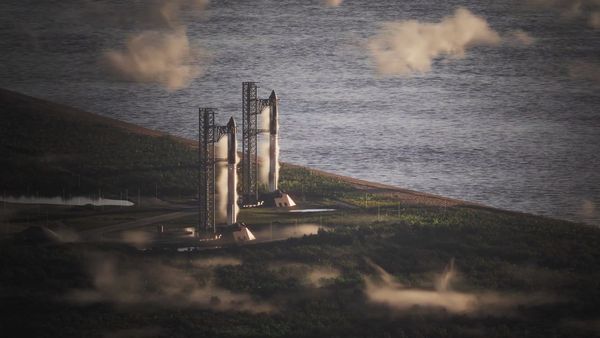One third of children in parts of Kenya are malnourished due to a devastating web of factors including aid cuts and climate-driven environmental impacts, The Independent can reveal
Recent monitoring of the one million-strong population of Turkana – Kenya’s second-largest county – has found that some some 70 per cent of people are not receiving enough nutritious food. Meanwhile, 87,000 children under five and 36,000 pregnant and breastfeeding women require treatment for acute malnutrition.
Now, Save the Children has revealed that its health screenings of children in the district have shown one third are currently coming up as acutely malnourished, posing a serious threat to their physical development and threatening their long-term health.
“I was shocked and saddened to see so many children and pregnant and breastfeeding women suffering from hunger and malnutrition,” said Alice Oyuko-Awuor, a clinical manager with Save The Children’s Emergency Health Unit.
“Countless parents told us they’re lucky if they can feed their children one cup of plain maize a day, and that they often go to bed hungry. Others are trying to survive on wild fruit.”
Climate-driven impacts in the region include rising water levels at Lake Turkana, alongside depleting fish-stocks. Intensifying drought conditions at other times of the year and locust invasions have also devastated pasture for livestock.
The findings come after the NGO warned that the UK’s aid cuts would severely impact the fight against malnutrition globally – as well as the UK government’s own impact assessment for aid programme allocations over 2025/6 confirming that “negative impacts” on poor and marginalised households are expected as a result of UK aid cuts.
Those impacted by the crisis in Turkana include Dinah, 27, who lives with her brother and five children, including seven-month-old twins Meldah and Ekuom.
The family live close to Lake Turkana, which historically provided a source of income and food for the family. But rising water levels and flooding from the lake have severely affected this way of life.
When her brother heads to the lake to go fishing nowadays, it is rare he returns with any significant catch. He is reporting that fish stocks have depleted as the water level has risen - while across the region the number of crocodile attacks reported has also increased as the geography of the lake has changed.
Dinah is making charcoal briquettes to sell, but is struggling to find buyers. She says they usually only have one meal a day of plain maize, but there are some days when she cannot afford any food, and they go to sleep hungry.
-holds-his-little-brother-Ekuom-(7-mths)-Turkana-Kenya.jpg)
-is-held-by-her-brother-Kenya-(8)-while-being-checked-by-a-doctor-in-Turka.jpg)
“When people go to fish by the lake, it will take them one and a half or two weeks, while people are starving here,” says Dinah. “But when they come back, they come with empty hands and then we’re left wondering [what we’ll eat]... We’re left wondering if we’ll survive.”
Dinah adds that the hunger facing her family means that “her children’s bodies have not grown… they have no fat”. When she sees them at night, she finds herself “crying silently”, she says.
There used to be a number of NGOs working in the area that would help people, says Dinah – but in recent times they have stopped coming. Notably, supplementary porridge that the World Food Programme used to provide to combat malnutrition in mothers is no longer available.
“It’s not like before. We used to see them (non-government organisations) coming a lot. You’d see one here, another there,” she says. “But now they have stopped coming”.
Dinah’s story comes against a backdrop of countries including the US and UK slashing their foreign aid spending this year, which in turn has impacted the budget of organisations like the UN’s World Food Programme (WFP).
-Meldah-Ekuom-(7-mths)-Asibitar-(5)-Kenya-(8)-Esinyen-(6)-outside-their-shelter.jpg)
Jib Pornpun Rabiltossaporn, Save the Children country director for Kenya and Madagascar, says that the reason fishermen on the lake are less successful than they used to be is because the rising water levels on the lake - which is being driven by climate change - have submerged fishing zones.
This in turn has increased the risk of crocodile attacks and impacted fish stocks, eroding families’ income and food availability.
For others in the region more engaged in pastoralism, adds Rabiltossaporn, recent locust infestations in May have led to a “significant reduction in vegetation cover”, while animals became ill or even died after feeding on locust droppings.
Across Kenya, new analysis by Save the Children finds that the number of people experiencing high levels of acute food insecurity is projected to increase by 16 per cent by January 2026.
This article was produced as part of The Independent’s Rethinking Global Aid project
Tea farmers struggle to pay medical bills as the climate crisis impacts crop sizes
UK pledges £27m in new aid for Rohingya refugees in Bangladesh
UN authorizes a much larger force to fight gangs in Haiti with new power to detain gang members
Moroccans clash with police during protests against World Cup spending
Wrestler pulls 700-tonne ship across the water using only his teeth







